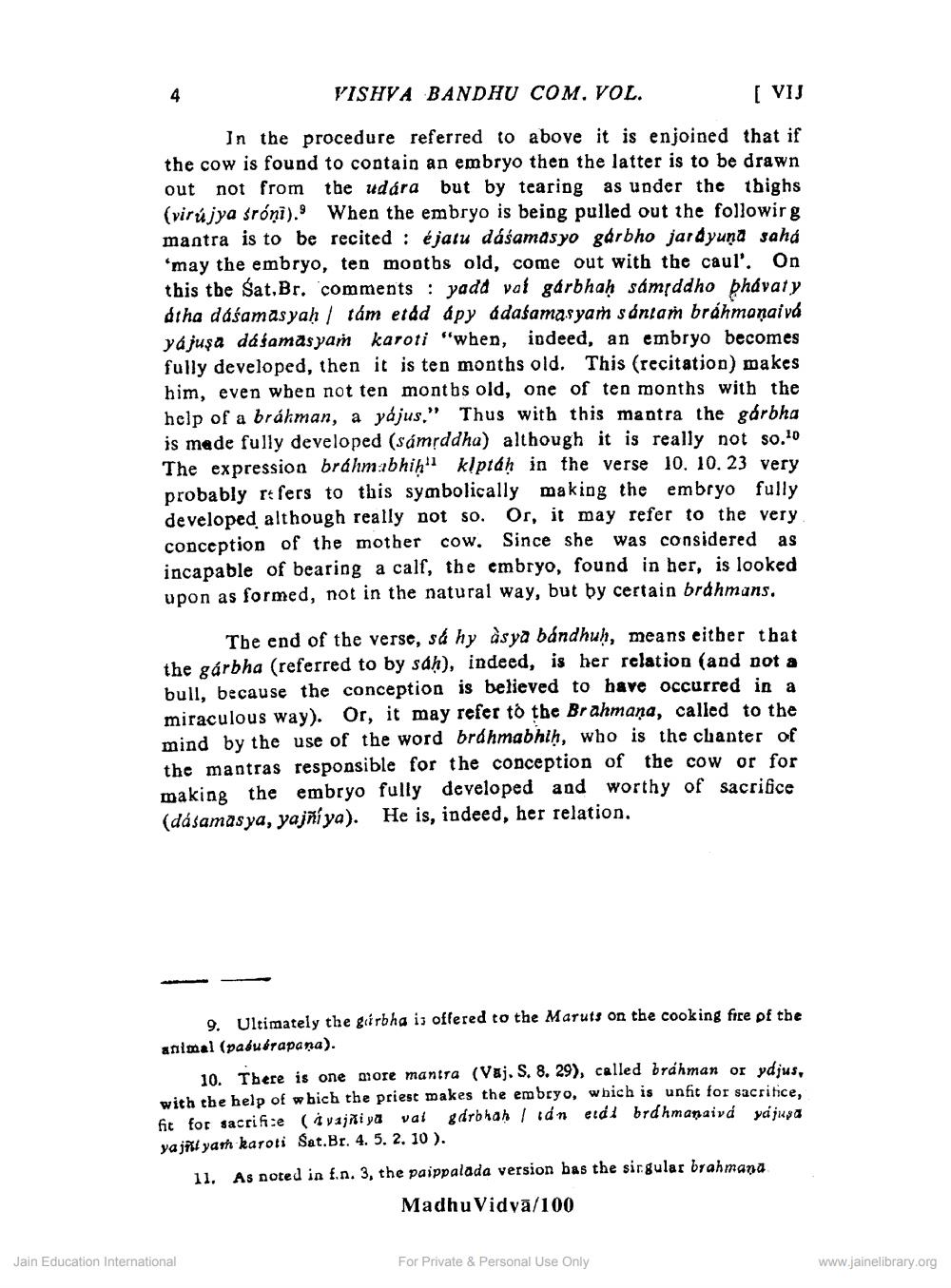________________
VISHVA BANDHU COM. VOL.
[ VIJ
In the procedure referred to above it is enjoined that if the cow is found to contain an embryo then the latter is to be drawn out not from the udára but by tearing as under the thighs (virújya tróni). When the embryo is being pulled out the followir g mantra is to be recited éjatu dásamasyo garbho jardyuna sahá 'may the embryo, ten months old, come out with the caul', On this the Sat.Br. comments: yadd vai gárbhaḥ sámṛddho phávaty átha dásamasyah/ tám etád ápy ádakamaryam sántam brahmanalvá yájuşa dásamasyam karoti "when, indeed, an embryo becomes fully developed, then it is ten months old. This (recitation) makes him, even when not ten months old, one of ten months with the help of a brákman, a yájus." Thus with this mantra the garbha is made fully developed (sámṛddha) although it is really not so.10 The expression bráhmabhih" klptáḥ in the verse 10, 10.23 very probably refers to this symbolically making the embryo fully developed although really not so. Or, it may refer to the very conception of the mother cow. Since she was considered as incapable of bearing a calf, the embryo, found in her, is looked. upon as formed, not in the natural way, but by certain brahmans.
4
The end of the verse, sá hy asya bándhuḥ, means either that. the garbha (referred to by sáḥ), indeed, is her relation (and not a bull, because the conception is believed to have occurred in a miraculous way). Or, it may refer to the Brahmana, called to the mind by the use of the word bráhmabhiḥ, who is the chanter of the mantras responsible for the conception of the cow or for making the embryo fully developed and worthy of sacrifice (dásamasya, yajni ya). He is, indeed, her relation.
9. Ultimately the garbha is offered to the Maruts on the cooking fire of the animal (paéuérapana).
10. There is one more mantra (Vaj. S. 8. 29), called bráhman or ydjus, with the help of which the priest makes the embryo, which is unfit for sacritice, fit for sacrifice (vajñiya vai garbhaḥ tán etdi brdhmanaivá vájusa yajil yah karoti Sat.Br. 4. 5. 2. 10).
11. As noted in f.n. 3, the paippalada version has the singular brahmana
MadhuVidva/100
Jain Education International
For Private & Personal Use Only
www.jainelibrary.org




